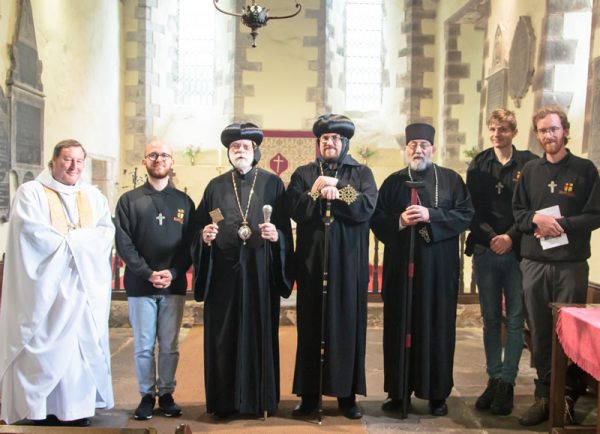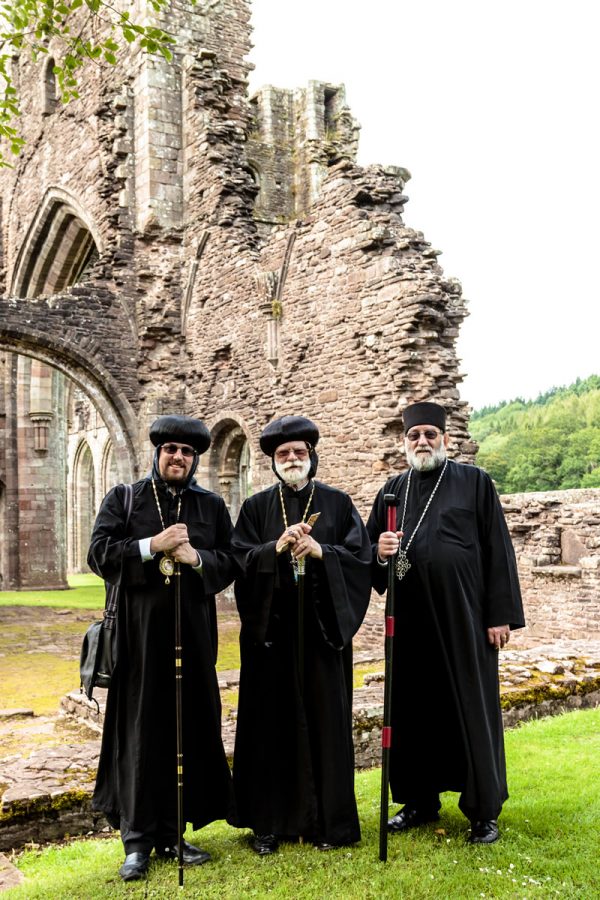The annual Llanthony Pilgrimage
On Saturday, 17 August, Abba Seraphim and Abba James, accompanied by Archdeacon Antony Holland, attended the annual Llanthony Pilgrimage organised by the Father Ignatius Memorial Trust. The last time that Abba Seraphim attended the Pilgrimage was forty-four years ago, when – as a priest – he accompanied his predecessor, Mar Georgius (1905-1979), Metropolitan of Glastonbury. On that occasion, 30 August 1975, the preacher then was the late Father Brocard Sewell (1912-2000), a Carmelite friar.
Upon arrival, Abba Seraphim and his companions, were greeted by Mr. Hugh Allen, a long-standing trustee and the author of the scholarly history of “New Llanthony Abbey” (2016). The 2019 Pilgrimage began with a Sung Eucharist at St. David’s Church. Llanthony, which stands on the site of a sixth-century cell belonging to St. David, on which the infirmary of the twelfth century Augustinian Llanthony Priory was later constructed. The celebrant was Father Philip Wyn Davies of Tregaron. Among the pilgrims were Canon Mark Soady and three brothers of the Holywell Community, a newly established male monastic community following the Rule of St. Benedict, based in Abergavenny.

Following this, the pilgrims gathered for lunch in and around the ruins of Llanthony Priory, set in the outstandingly beautiful Black Mountains. After lunch some of the pilgrims travelled on foot to Capel-y-Ffin, some five miles away. At 3.30 pm Evensong was held in the tiny late-eighteenth century church of St. Mary, Capel-y-Fin, where Canon Simon Griffiths, Precentor at Truro Cathedral, preached an impressive sermon on the mission and witness of Father Ignatius. After this, the pilgrims processed up the hill to the site of Father Ignatius’s monastery and the ruins of the church, where he was buried in 1908. During the procession the Litany of Our Lady was sung in Latin and prayers were also said at the Wayside Calvary and at a Statue of the Mother of God situated on the terrace in front of the former monastery.

Father Ignatius was a committed traditionist who actively condemned heresies publicly sanctioned among his contemporary clergy: notably Canon Wilberforce denying our Lord’s Resurrection on Easter Day, which had been approved by Archbishop Frederick Temple; the denial of our Lord’s Virgin Birth by the Vicar of Yardley (C.E. Beeby); and Dean Fremantle of Ripon – whom Father Ignatius called “the Prince of Infidels” – who denied our Lord’s Ascension and stated that “we are not to pretend that the Scriptures are absolutely perfect in any part” and that our Lord Himself did not “pretend to an absolute knowledge of God.” Although we live in very different times, the drift away from traditional Christian belief is tragically still prevalent. Commenting on the Pilgrimage, Abba Seraphim said he was deeply touched by the warmth and spirit of fellowship which he encountered throughout the day, and that among the pilgrims – who largely comprised Anglo-Catholics, Roman Catholics and Orthodox – there was a shared commitment to traditional Christianity, which was demonstrated by a genuine œcumenical spirit underlying their veneration for the Mother of God and commemoration of Father Ignatius and his testimony.
